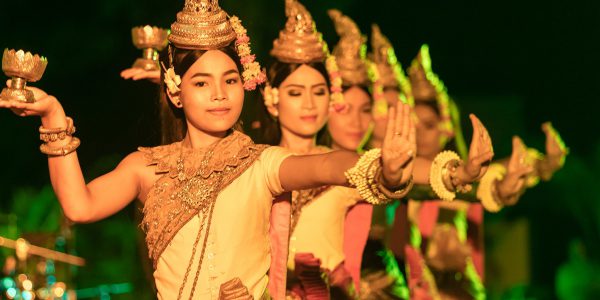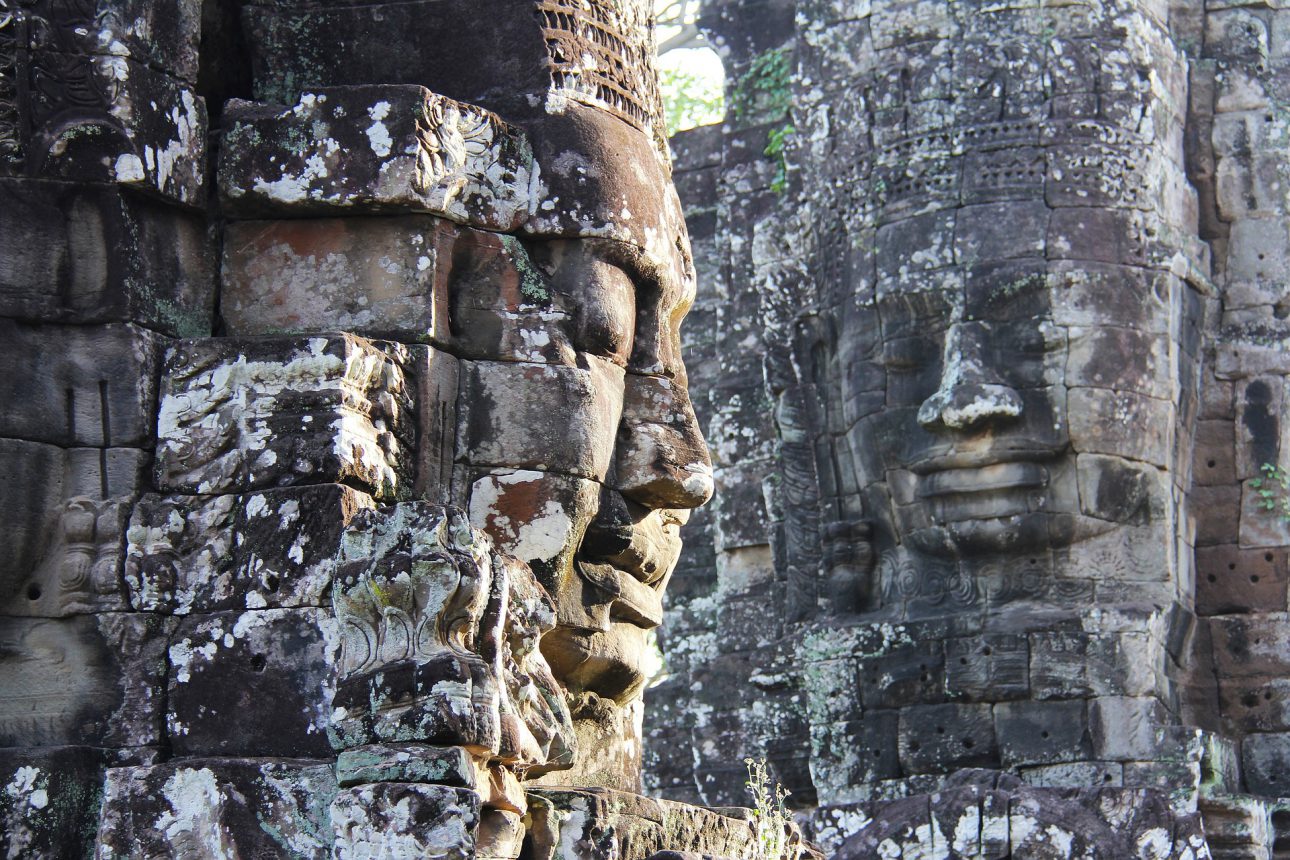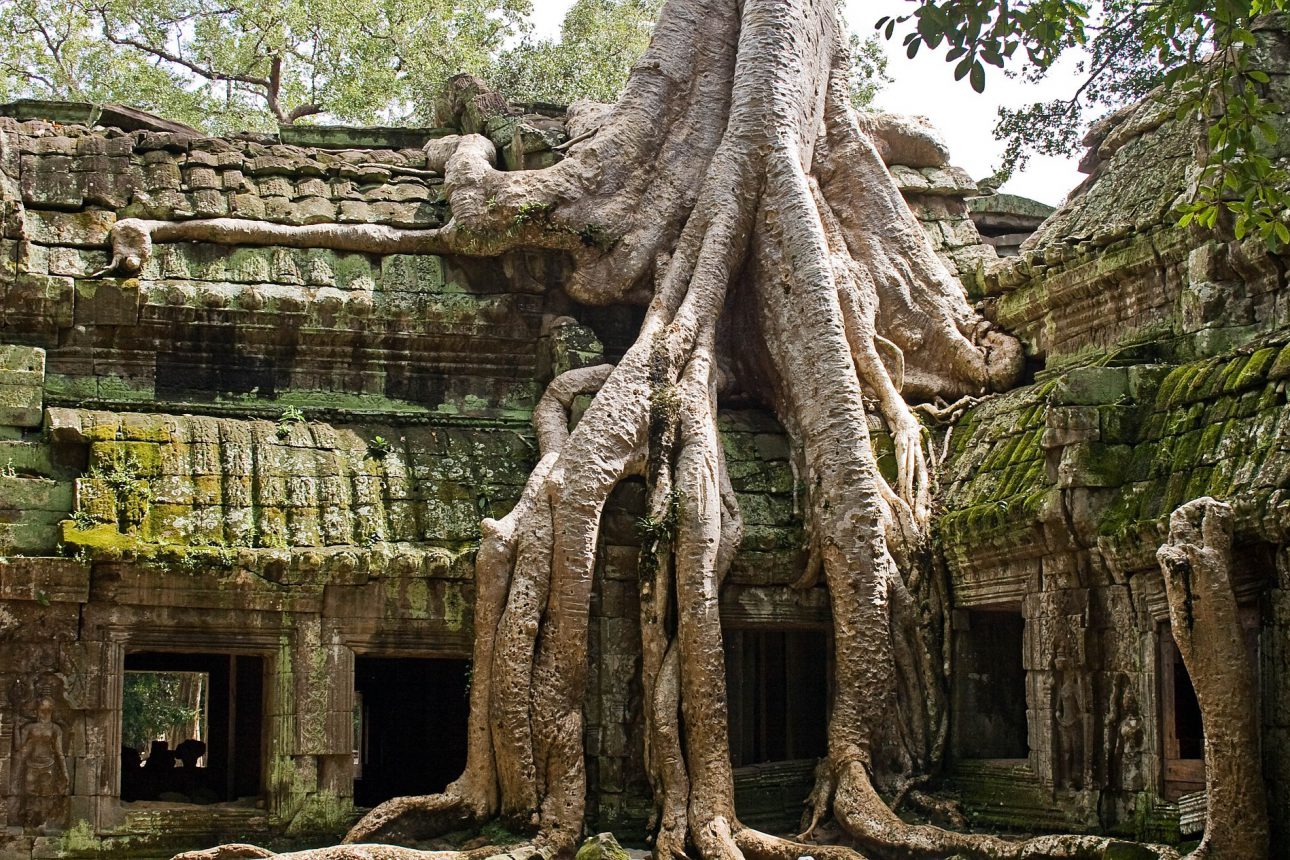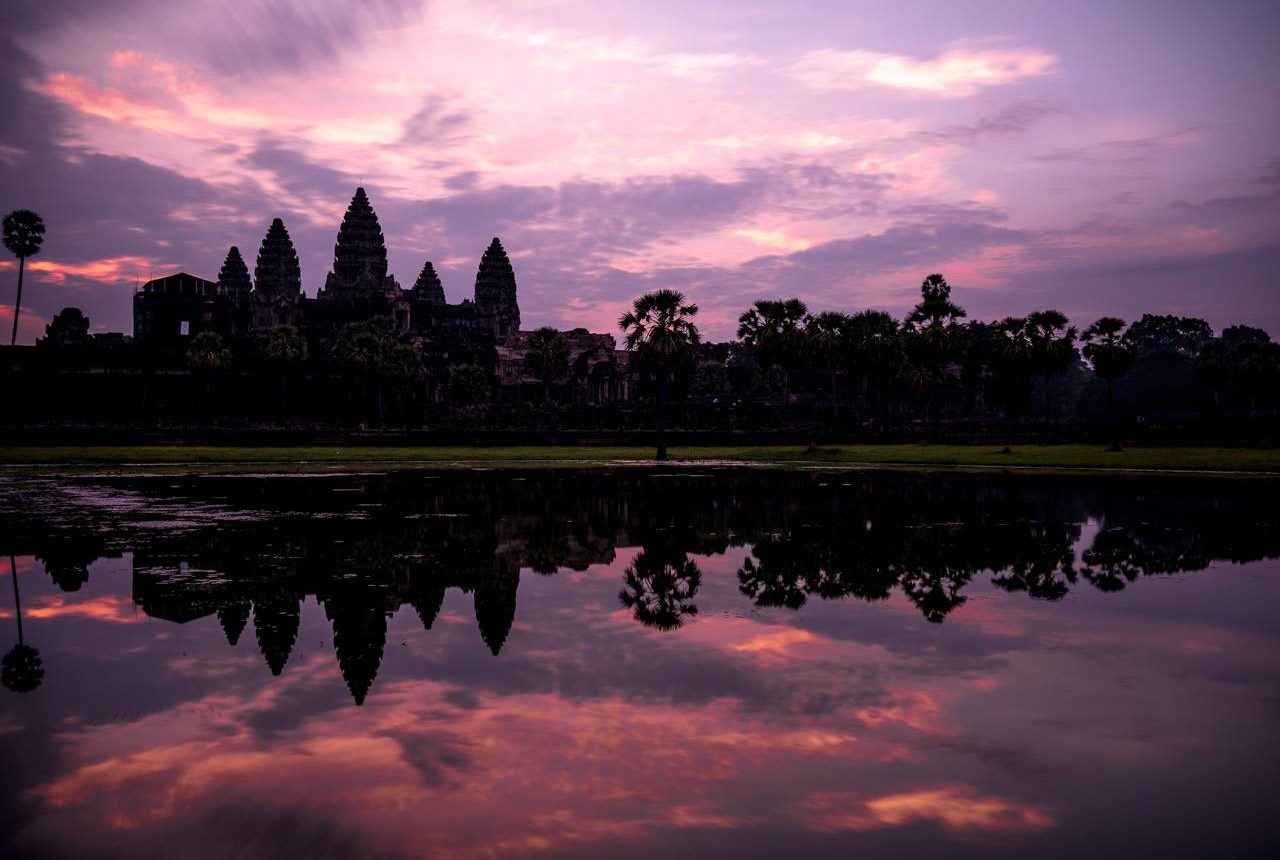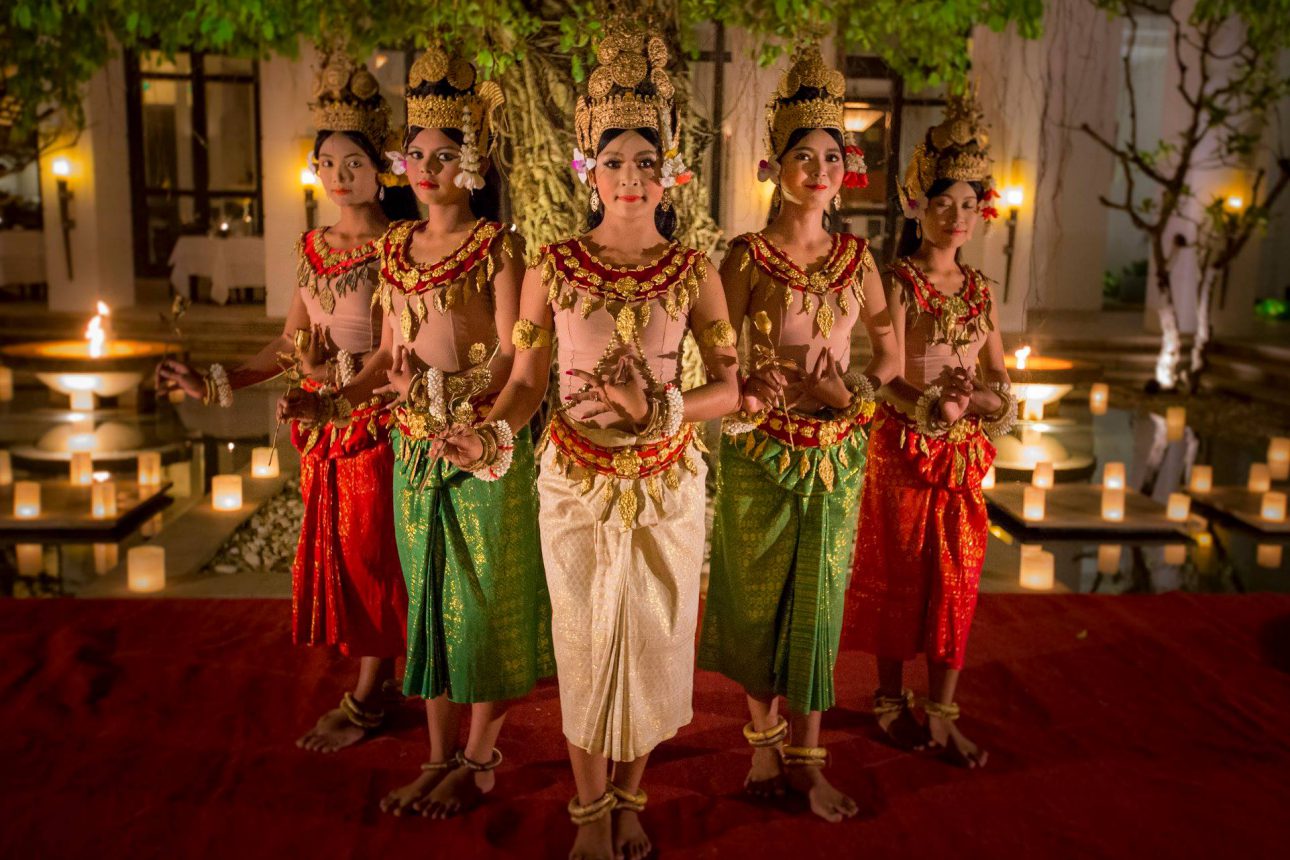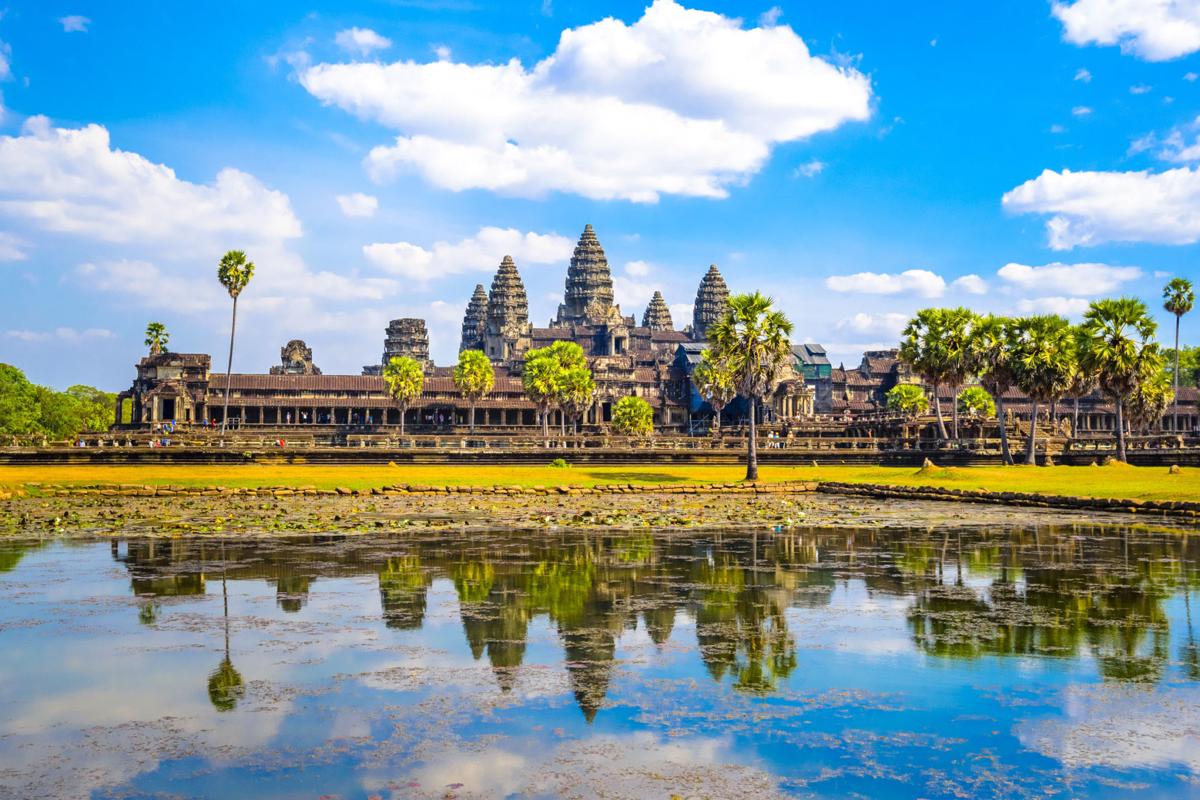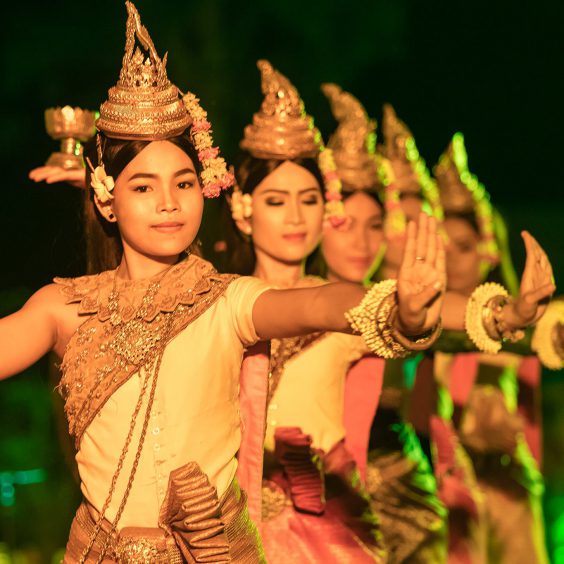Day 1: Siem Reap Arrival
Welcome to Siem Reap, the ancient capital of the Khmer Empire. Upon your arrival in Siem Reap, you will be welcomed by our local English-speaking guide and transferred to your hotel for check in.
Overnight in Siem Reap.
Day 2: Temples of Angkor (B/L)
Breakfast in hotel. Spend full day exploring the most fabled temples in the Small Circuit of Angkor Archaeological Park.
This morning explore the ancient city of Angkor Thom, the last capital of the Great Khmer Empire under the reign of Jayavarman VII in late 12th century. Angkor Thom is an almost square city surrounded by a stonewall, 8m high and 12 kilometers long, with five entrance gates (two in the east wall). Each gate is carved with three giant faces and is flanked by 54 gods on the left and 54 demons on the right of its causeway.
Continue to the Bayon Temple, the centerpiece of Angkor Thom complex. The structure encompasses 54 towers that are decorated with 216 smiling stone faces. Next proceed to the Baphuon Temple nearby. The 11th century pyramid–style temple was probably among the most impressive of the Angkor temples in its day. Climb steep stairs to the upper terrace of the temple and enjoy great views from there. Follow by a visit to the Terrace of the Elephants and the Terrace of the Leper King, both known for their intricate bas-reliefs.
After lunch, have a short break before heading to the magnificent Angkor Wat, the world’s largest religious monument. The architectural masterpiece was built in the 12th century, took 30 years to complete and represents the Khmer civilization at it grandest. Crowned by five towers, with elaborate bas-reliefs and a profusion of statues, Angkor Wat is enthralling. The temple is the national symbol of Cambodia and proudly appears on the country’s flag.
Overnight in Siem Reap.
Day 3: Temples of Angkor (B/L)
Breakfast in hotel. Spend full day of adventure to the most beautiful temples in Grand Circuit of Angkor Archaeological Park.
Visit to one of the most picturesque Angkor temples, Ta Prohm. Built in the mid 12th to early 13th centuries during the reign of Jayavarman VII, Ta Prohm is unique in that it remains largely overgrown by jungle. Continue to another temple built during the reign of Jayavarman VII, Preah Khan. While Ta Prohm was built to honour the king’s mother, Preah Khan was built for his father. Preah Khan is less visited and more unrestored, and therefore offers more of a “Tomb Raider” experience.
If time permits, visit the temples of Banteay Kdei and Takeo nearby. Both are peaceful and quite in contrast to other famous temples. Built by King Jayavarman VII, Banteay Kdei means “A Citadel of Chambers”. This photogenic temple is actually made up of a fascinating maze of chambers. Takeo is the first temple built entirely in sandstone during the reign of King Jayavarman V (968 - 1001). As one of the tallest monuments of Angkor, its five sanctuaries are placed on top of a 22-meter high stepped pyramid, offering good views of the surrounding area.
This afternoon travel to the countryside to see the hidden gem of the Angkor Archaeological Park, the beautiful temple of Banteay Srey. Banteay Srey is unique in that it is constructed of pink sandstone, which is seen nowhere else in the park. This small temple is noted for its truly remarkable fine bas-reliefs. Because of its remote location, the temple is often passed over by visitors but is probably the best-preserved monument of the entire Angkor complex.
On the way back to Siem Reap, visit the charming temple of Ta Som. It was built in the Bayon style and has been well restored. One of the most prominent features of this temple is the huge strangler fig tree, which has engulfed the eastern gate, providing excellent photo opportunities.
Our last stop today is Pre Rup temple. Climb up to the top level of this ancient temple and enjoy sunset over the temples and the jungle.
Overnight in Siem Reap.
Day 4: Tonlé Sap Lake (B/L)
After breakfast, drive past expansive rice fields and through local villages to the Tonlé Sap Lake. Take a relaxing boat trip along a canal that lead to the largest freshwater lake in Southeast Asia. Visit a floating fishing village and observe the vibrant daily life of the locals.
Next visit Angkor Silk Farm, where you can witness the entire process of silk creation from the breeding process and life cycle of the silkworm to the spinning of the silk, the dying process and the creation of beautiful silk weavings on wooden hand looms.
Stop for lunch at a local restaurant. Free at your own leisure till transfer to the airport for your onward flight.


